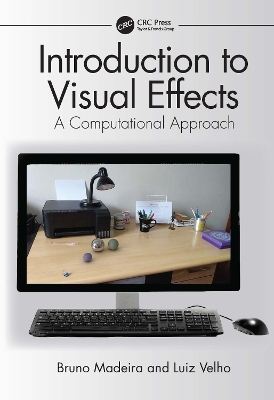
Introduction to Visual Effects
CRC Press (Verlag)
978-1-032-06124-5 (ISBN)
Introduction to Visual Effects: A Computational Approach is the first single introduction to the computational and mathematical aspects of visual effects, incorporating both computer vision and graphics. The book also provides the readers with the source code to a library, enabling them to follow the chapters directly and build up a complete visual effects platform. The book covers the basic approaches to camera pose estimation, global illumination, and image-based lighting, and includes chapters on the virtual camera, optimization and computer vision, path tracing and many more.
Key features include:
Introduction to projective geometry, image-based lighting (IBL), global illumination solved by the Monte Carlo method (Pathtracing), an explanation of a set of optimization methods, and the techniques used for calibrating one, two, and many cameras, including how to use the RANSAC algorithm in order to make the process robust, and providing code to be implemented using the Gnu Scientific Library.
C/C++ code using the OpenCV library, to be used in the process of tracking points on a movie (an important step for the matchmove process), and in the construction of modeling tools for visual effects.
A simple model of the Bidirectional Reflectance Distribution Function (BRDF) of surfaces and the differential rendering method, allowing the reader to generate consistent shadows, supported by a code that can be used in combination with a software like Luminance HDR.
Bruno Madeira is a computer engineer from the Military Institute of Engineering (IME). He received his master's and DSc degrees in mathematics with emphasis on computer graphics and vision at IMPA. He has more than 15 years of experience teaching computer graphics at IME and is a member of the Simulators Group at CTEx, Brazil. Luiz Velho is a senior researcher, professor, and a VISGRAF Laboratory leading scientist at the National Institute for Pure and Applied Mathematics (IMPA), Brazil. His academic background includes a BE in industrial design from ESDI-UERJ, an MS in computer graphics from MIT Media Lab, and a PhD in computer science from the University of Toronto. His experience in computational media spans the fields of modeling, rendering, imaging, and animation.
1. Introduction. 2. Virtual Camera. 3. Optimization Tools. 4. Estimating one camera. 5. Estimating two cameras. 6. Feature Tracking. 7. Estimating many cameras. 8. Modeling Tool. 9. Light Transport and Monte Carlo. 10. Image Based Lighting.
| Erscheinungsdatum | 16.05.2023 |
|---|---|
| Zusatzinfo | 3 Line drawings, color; 27 Line drawings, black and white; 12 Halftones, color; 15 Illustrations, color; 27 Illustrations, black and white |
| Verlagsort | London |
| Sprache | englisch |
| Maße | 178 x 254 mm |
| Gewicht | 444 g |
| Themenwelt | Informatik ► Grafik / Design ► Digitale Bildverarbeitung |
| Informatik ► Software Entwicklung ► Spieleprogrammierung | |
| ISBN-10 | 1-032-06124-3 / 1032061243 |
| ISBN-13 | 978-1-032-06124-5 / 9781032061245 |
| Zustand | Neuware |
| Informationen gemäß Produktsicherheitsverordnung (GPSR) | |
| Haben Sie eine Frage zum Produkt? |
aus dem Bereich


